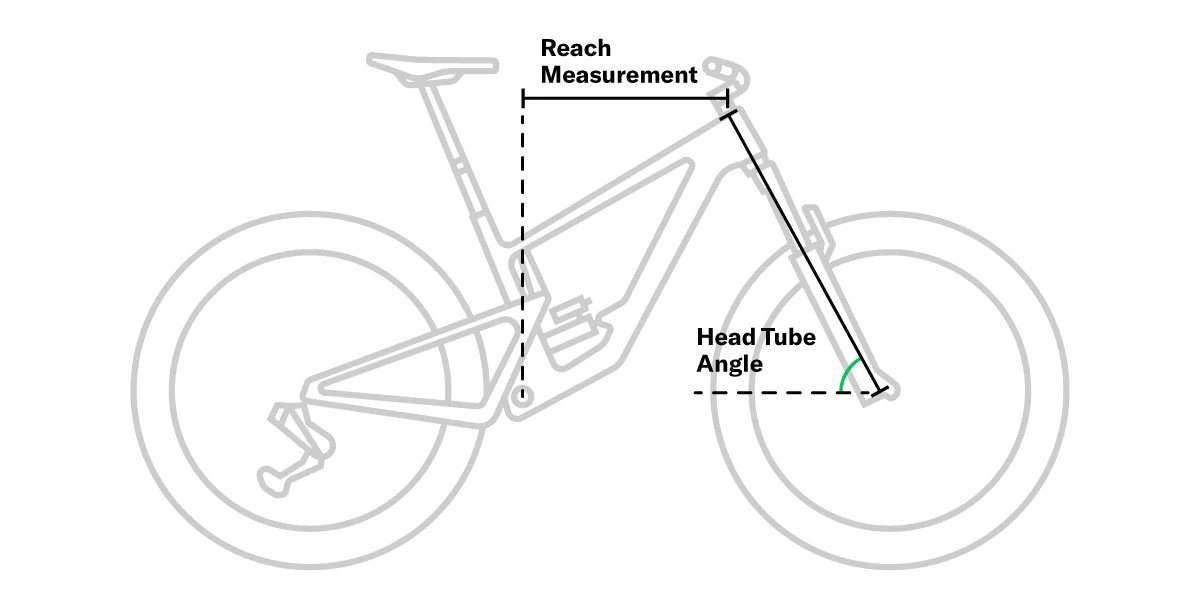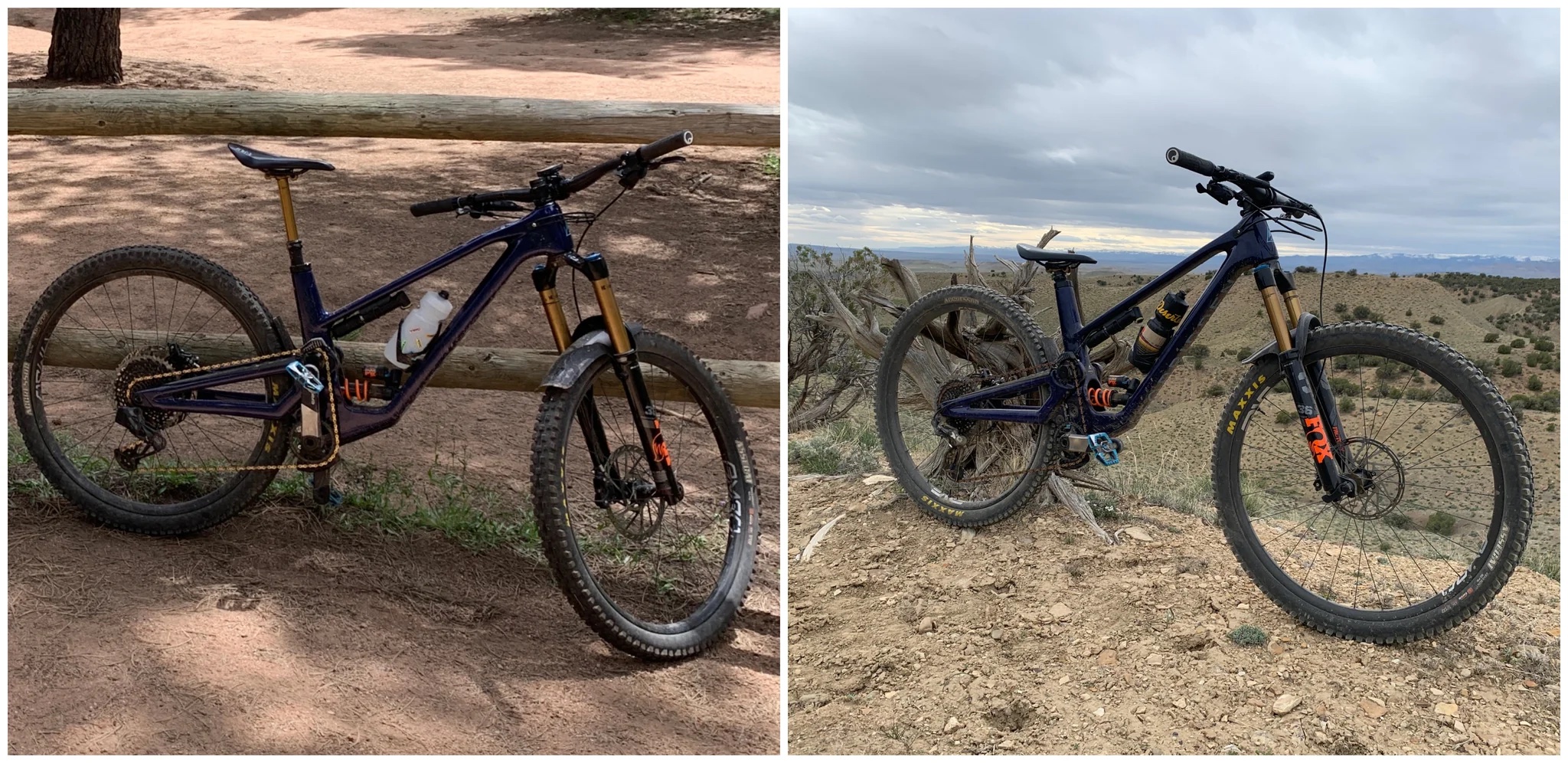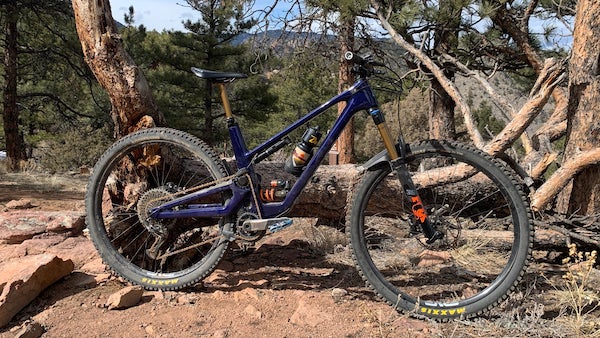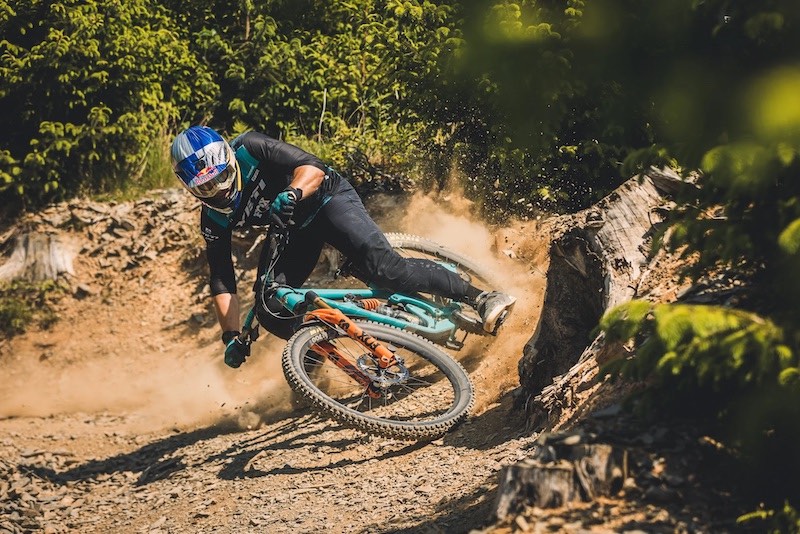Categories
New Blog
Tags
Reach is probably the most important measurement when it comes to sizing a mountain bike frame. But is it better to go shorter or longer? How do you find the right length?
Are you between frame sizes? Are you curious about trying a different sized frame to see if it improves your riding? Or maybe you’re comparing bike models that have different reach numbers. Mountain biking is a sport where riders have a decent amount of freedom to experiment with sizing, so it makes sense to nerd out on geometry numbers like reach.
The editor will ride different size of mountain bike,One was size medium and one was sized large. Let us see what happened.
Why Would Size Up My Mountain Bike

While manufacturers often provide size charts with recommended rider heights for each frame size, you actually have a bit of flexibility when it comes to sizing a bike for gravity-oriented disciplines. Many modern trail, enduro, and downhill bikes now have lower standover heights and shorter seat tubes which allows riders of vastly different heights to ride the same size.
More progressive brands have even stopped using the words “small, medium, and large” in their sizing. Specialized, for example, uses a new “S-Sizing” system for its latest trail, enduro, and downhill bikes. The purpose of this shift is to encourage riders to choose their bike size based on their preferred reach, rather than arbitrary size names.
Around ten years ago, bike designers began experimenting with “progressive geometry.” Bike frames started getting longer reach measurements (and slacker head angles) because longer bikes felt more stable. This increase in length was usually paired with a shorter stem, which improved control and made it harder to go over the handlebars. This is a very general statement, but most people can ride faster on steep and gnarly downhills with a longer bike than a shorter bike.
While bikes have gotten much longer over the last ten years, some riders were hungry for even more reach than what many manufacturers were providing. If you want a longer bike, the easiest way to do it is to simply ride a bigger size.
Medium vs. Large MTB Frame Experiment

Last winter, editor buy a Forbidden Druid V1 because he was keen to finally try out a high-pivot mountain bike. There was a small hitch though. With a 445mm reach, the medium Druid was slightly shorter than his Sqweeb. Even though it was only 5mm, it seemed like the opposite of what he wanted from my next bike. The large Druid, on the other hand, had a 465mm reach. A decent upgrade from the Sqweeb.
February he was riding new bike. This isn’t a review of the Druid, but initial impressions were that it felt really, really good. On steep and fast tracks, the 15mm increase in reach resulted in a very noticeable increase in stability. He thought made the right choice.

After a couple of months, a sliver of doubt started creeping in. He was riding a wide variety of trails and had experienced many instances where the bike felt surprisingly awkward and slow. he’ve never been good at hairpin corners, and on my large Druid, he felt worse at it than ever. he really began to notice how much harder it was to pop manuals, jib off little features on the trail, and wiggle through tight squeezes between rocks and trees. he had a worrying thought: could my bike be TOO long?
There was only one way to know — he decided to pick up another Druid frame. This time, a medium. Unfortunately, he didn’t have enough parts to get both bikes up and running at the same time, which would have been nice for some back to back testing. But I did the next best thing. For a couple of weeks, he rode a variety of different trails on my large frame. Then, he rode those same trails again on my medium frame for another couple of weeks. Here’s what his discovered:
|
Smaller MTB Frame |
Larger MTB Frame |
|
Better in slow/tight turns |
Better in super fast/straight sections |
|
Better off ledges and drops |
Better in rough rock gardens |
|
Better for manuals and jibs |
Better on big jumps |
|
Better on tight/techy/unknown trails |
Better at the downhill bike park |
|
Better for quick/sudden maneuvers |
Better for staying on line |
Really, it’s what you’d expect. The medium/shorter frame felt more playful and maneuverable. The large/longer frame felt more stable. If you scroll back up and look at the Specialized S-Sizing chart, that’s exactly what it says.
The increased stability of a long bike is good for descending on steep, high-speed trails, but whenever the trail slowed down or flattened out, the larger bike began to feel a bit cumbersome.
Something that surprised is that the smaller frame also felt like it climbed better. The main reason is probably because run no spacers under handlebars and the medium frame had 15mm less stack. This put riders in a more aggressive climbing position. It also just felt easier to use body English to pump and punch the bike up and over techy sections.
However, the one place where really liked the larger frame a lot more was at the downhill bike park. Here, you can repeat trails a lot, so you get to know where every feature is. This means you can blast down them a lot faster. Because the speeds are higher, the extra stability really helped me let go of the brakes and push the limits. It was easier to plow through the rough stuff without getting knocked off line. The bike also felt much less twitchy (i.e. scary) on really big jumps.
So what was the end result of my little experiment? After a couple weeks of riding medium Druid, editor decided to keep it. The large frame has since been stripped, and it’s already gone off to a new home. If the bike park regularly or competing in a lot of enduro races, then the large frame would probably have been the better choice. But for everything else, the medium frame felt better. It turns out that he had gotten things right with my previous bike, the Sqweeb. That 445-450mm reach is spot on for all regular trail rides.
Good MTB Geometry Is Everything, but It Also Isn’t
The moral of the story isn’t that smaller or bigger bike frames are better. Rather, it’s that there’s likely a reach number that works best for your terrain and riding style. Rather than just focusing on whether a bike is small, medium, or large, it’s worth paying more attention to geometry charts and measurements like reach when it comes to sizing.
Riding a larger frame changed my perception of what editor actually wanted. editor thought that longer, more stable bikes were the best thing for gravity-oriented riding. But editor discovered his limit, and a bike with a 465mm reach is just too much for my trails and how editor ride. For now, editor’m happier on bikes that have a reach around 440-450mm. To editor, this gives him the best compromise between stability and agility, and it’s the recipe for the most fun.
But even if you’re the same height, it doesn’t mean you’ll be happy on the same size bike as editor. Unfortunately, discovering editor's perfect bike length required experimentation. For you, that might mean buying a new bike, trying your friend’s bikes, renting different bikes, and going to demo days.

If you’re caught between bike sizes and unsure which way to go, look at the table above comparing smaller and large MTB frames. There are 10 riding qualities listed. Pick out the top 5 that matter to you. Whichever side has the majority, that’s probably the way you should go.
One thing to note is that in recent years, the industry has settling down when it comes to reach (which is why editor’ve recently been recommending buyers shop for MTBs made after a certain year). New bikes aren’t getting that much longer, because many manufacturers have discovered a reach number that works well for the recommended rider heights for each frame size.
That said, while it’s fun to nerd out on details like reach and sizing, editor want to be clear that the rider ALWAYS matters more than the bike. Whatever length your bike is, if you work on your skills and become in tune with your machine, you can ride fast on nearly anything.
Notes:article from website
Xiamen Tour de Cycling is committed to providing high quality, low weight , high strength and high performance stable carbon MTB frameset ,high end MTB bike carbon frames, we can provide as well as high level carbon gravel frames,light weight aero road carbon frames. Please contact us to start your OEM project.